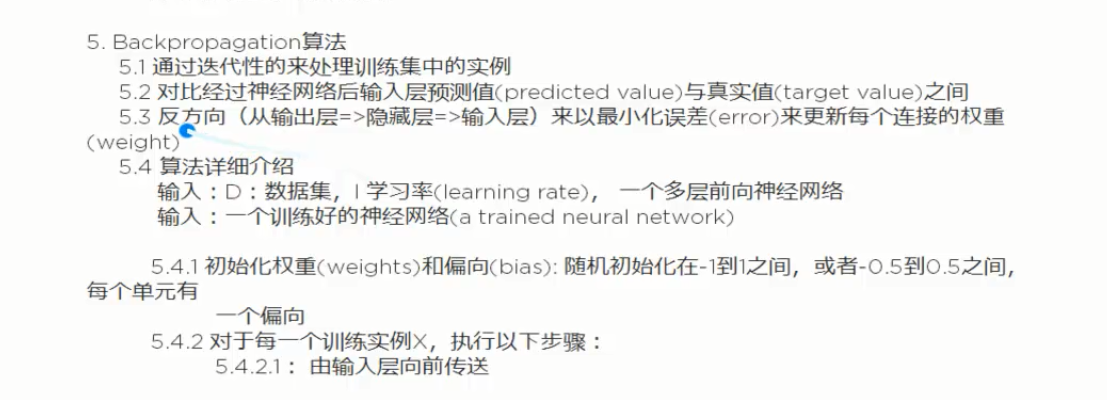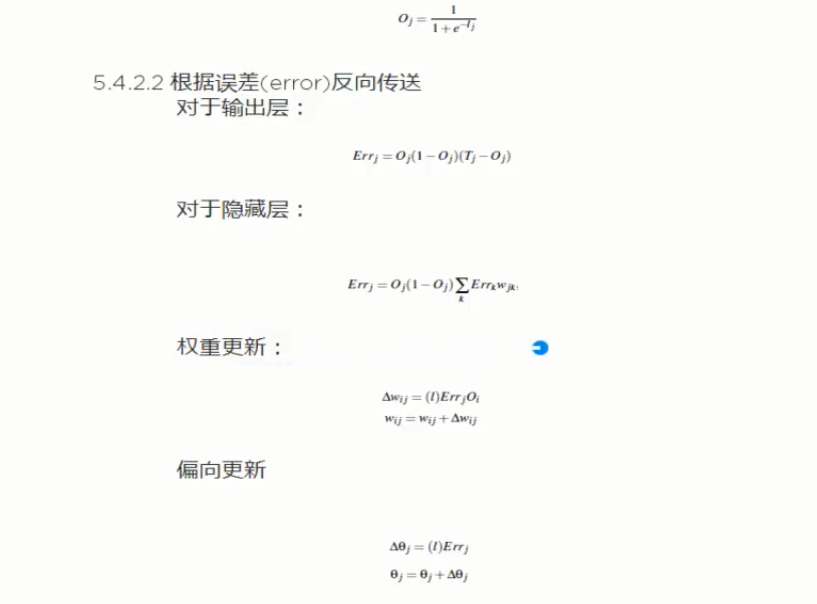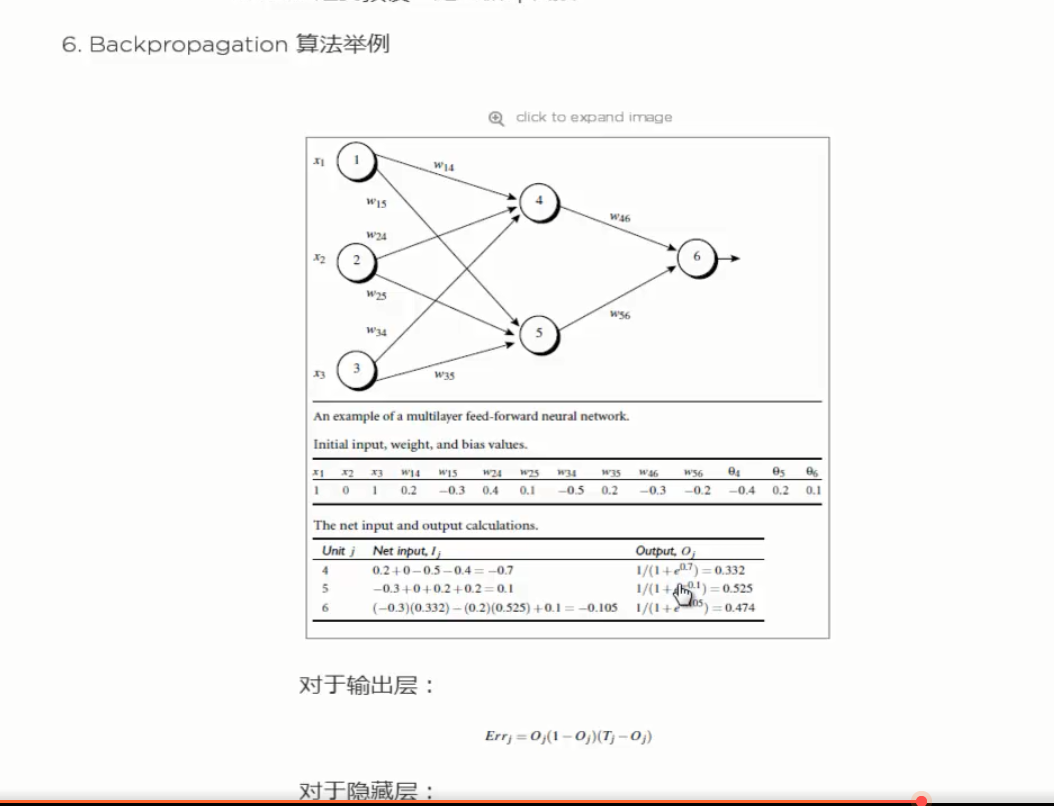麦子学院机器学习基础(5)-(神经网络NN))(python)
一 多层前向神经网络
输入层(input layer)-> 隐藏层(hideen layer)->输出层(outpu layer)

每层由单元组成
神经网络算法设计
算法介绍



二 训练实例

三 代码实战
import numpy as np def tanh(x): #定义tan函数 return np.tanh(x) def tanh_deriv(x): #定义tan函数的导数 return 1.0-np.tan(x)*np.tan(x) def logistic(x):#定义逻辑回归函数 return 1/(1+np.exp(-x)) def logistic_deriv(x):#定义逻辑回归函数的导数 return logistic(x)*(1-logistic(x)) #定义一个名为神经网络的类 class NeuralNetwork: #init类似于构造函数 初始化一个类对象是默认调用 def __init__(self,layers,activation='tanh'): #选择该神经网络所使用的损耗函数 if activation == 'logistic': self.activation = logistic self.activation_deriv = logistic_deriv elif activation == 'tanh': self.activation = tanh self.activation_deriv = tanh_deriv self.weights = [] #初始化一个weigt权重容器 #初始化权重 是随机的 还要加上偏差bias for i in range(0,len(layers)-1): self.weights.append((2*np.random.random((layers[i]+1,layers[i+1]+1))-1)*0.25) #参数说明 def fit(self,x,y,learn_rate = 0.2,epochs = 100000): x = np.atleast_2d(x) #升到2维以上 temp = np.ones([x.shape[0],x.shape[1]+1]) #增加的一类用于处理Bias 因此设置为1 temp[:,0:-1] = x #左闭右开 把X的值赋值给新的数组 x = temp y = np.array(y) for k in range(epochs): #采用抽样的方法进行训练 i = np.random.randint(x.shape[0]) a = [x[i]] for l in range(len(self.weights)): a.append(self.activation(np.dot(a[l],self.weights[l]))) #矩阵求和 然后在用损耗函数处理 再放在数组后面 整个过程处理完毕 error = y[i] - a[-1] #计算结果误差 deltas = [ error*self.activation_deriv(a[-1])] #计算输出层误差 #现在开始反向走 for i in range(len(a)-2,0,-1): # deltas.append(deltas[-1].dot(self.weights[i].T)*self.activation_deriv(a[i])) deltas.reverse() for i in range(len(self.weights)): layer = np.atleast_2d(a[i]) delta = np.atleast_2d(deltas[i]) self.weights[i]+= learn_rate*layer.T.dot(delta) def predict(self,x): x = np.array(x) temp = np.ones(x.shape[0]+1) temp[0:-1] = x a = temp for i in range(0,len(self.weights)): a = self.activation(np.dot(a,self.weights[i])) return a[0]
from NeuralNetwork import NeuralNetwork import numpy as np nn = NeuralNetwork([2,2,1],'tanh') #建立两层神经网络 输入层为2维 隐藏层为2维 输出层为1维 x = np.array([[0,0],[0,1],[1,0],[1,1]]) y = np.array([0,1,1,0]) nn.fit(x,y) for i in [[0,0],[0,1],[1,0],[1,1]]: print(nn.predict(i))


